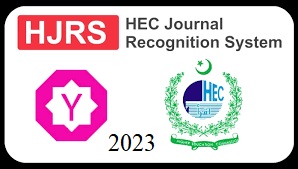Formulation and evaluation of mucoadhesive gastro-retentive tablets of domperidone
Keywords:
Domperidone, ntiemetic, Mucoadhesive gastro-retentive tablet, CarbopolAbstract
Objective: This study was aimed at the formation and evaluation of the mucoadhesive gastro-retentive tablet of domperidone to overcome the drawbacks related to the oral administration of drugs. These gastro retentive formulations stay in the stomach for a longer time to provide prolonged gastric retention time. Methods: Mucoadhesive tablets were prepared by using Carbopol 940, sodium alginate, HPMC, and other polymer combinations in five formulations. Before tablet preparation, pre-formulation studies were performed i.e., bulk characterization, crystallinity, hygroscopicity, micrometric properties, melting point, particle size distribution, solubility, and stability analysis. The method of wet granulation was used for the formation of mucoadhesive gastro-retentive tablets of domperidone. Five formulations were evaluated for physical parameters using official methods mentioned in USP pharmacopeia, mucoadhesive strength & time, and swelling index. The USP-II dissolution apparatus with 1.2 HCl buffer was used for performing an in-vitro dissolution study for 24 hours. The optimized formulation was evaluated for compatibility studies using FTIR and DSC studies. Results: Among the five formulations the F5 was the optimized formulation because of its drug content, mucoadhesive strength, in-vitro drug release, and swelling index (7hr) of the optimized formulation 95.92 ± 0.62%, 26.98 ± 1.0gm, 93.16%, and 3.673% respectively. The release kinetics indicated that the F3 to F5 followed Higuchi’s equation and non-fickian release which means F5 was dependent on both diffusion and dissolution thus the system is both diffusion and dissolution controlled. The resultant peaks of FTIR and DSC studies showed almost no drug-polymer interaction, which indicated physiochemical compatibility of drug and polymer in the optimized formulation. Conclusion: Hence concluded that the F5 was an optimized formulation that contained 84gm of Carbopol 940 and was found suitable for all performed evaluating parameters.
Downloads
Published
How to Cite
Issue
Section
License
Copyright (c) 2024 Drakhshaan Abdullah, Rabia Saeed, Maria Ali, Mahum Sohail, Sumiya Naeem, Talib Hussain

This work is licensed under a Creative Commons Attribution 4.0 International License.









